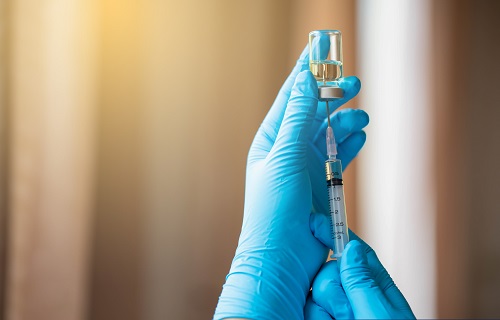The number of confirmed COVID-19 cases has now surpassed 30 million across the globe, and the big question being asked more than ever is: When and at what cost to life, relationships, business, and the economy will we emerge from this pandemic?
Although not a guaranteed silver bullet, a safe and effective vaccine against the pathogen behind this pandemic, severe acute respiratory syndrome coronavirus 2 (SARS-CoV-2), is one of the most eagerly awaited good-news events to help bring this crisis to an end.
While traditional vaccine development can take years, or even decades, before leaving the laboratory, the current pandemic has unprecedentedly revolutionized this timeline. As of September 17, 2020, according to the Draft landscape of COVID-19 candidate vaccines by the World Health Organization (WHO), 36 candidate SARS-CoV-2 vaccines were in clinical evaluation, in addition to 146 candidate vaccines in preclinical evaluation. [1] The 36 front runners in this race may be broadly divided into three camps:
- The old: Whole-inactivated vaccines, live-attenuated vaccines, and subunit protein vaccines, being developed on conventional platforms that produced numerous successful vaccines in the past
- The new: Novel options like RNA (ribonucleic acid) and DNA (deoxyribonucleic acid) vaccines that are promising, but yet to be proven
- The borrowed: Viral vector vaccines that use an existing viral vector to deliver SARS-CoV-2 antigen-producing instructions
Let’s look at each of these in further detail.
The Old: Whole-inactivated, live-attenuated, and subunit protein vaccines
Whole-inactivated vaccines use killed virus as the antigen - a substance the immune system recognizes as “foreign” and produces an immune response to. As they do not contain live components, inactivated vaccines have no risk of causing the disease they are designed to prevent, so are considered safer than live-attenuated (weakened virus) vaccines. However, the immunity induced by inactivated vaccines is of more limited duration on average compared to live-attenuated vaccines. Multiple doses or boosters over time may be required. In the case of SARS-CoV-2, large quantities of virus would need to be cultivated under biosafety level 3 (BSL3) conditions to manufacture a whole-inactivated vaccine. [2]
Subunit vaccines, like inactivated whole-cell vaccines, do not contain live components of the pathogen. They differ from inactivated whole-cell vaccines by containing only the antigenic parts of the virus that are necessary to elicit a protective immune response. As brilliantly explained by Jean and Peter Medawar, a virus is “simply a piece of bad news wrapped up in protein.” The spike (S) protein is one of the structural proteins that forms the shell of the SARS-CoV-2 and protects the bad news, a strand of RNA, inside. The spike shape of the S protein functions like a key to cleave and unlock a receptor on the surface of some human cells called angiotensin-converting enzyme 2, or ACE2, which allows the viral RNA inside the protein shell to enter the host cell and be replicated. A subunit vaccine that contains S protein, if successful, may induce immune responses against this protein, to prevent it from binding to human cells and stop the virus from reproducing during natural infection. The success of protein subunit vaccines depends on the in-depth knowledge of which viral antigens induce enduring protective immunity in response to natural infection. In addition, protein vaccines require correct folding of the protein to ensure its immunogenic efficacy.
Clinical vaccine development is a three-phase process. During Phase I, the trial vaccine is tested on small groups of people; during Phase II, the study is expanded and the vaccine is given to people similar to those for whom the new vaccine is intended; and in Phase III, it is given to thousands of people to test for efficacy and safety. At current stage, there is no Phase III data available on subunit candidate vaccines against SARS-CoV-2. In other words, no guarantee that immune memory will be formed in the correct manner and in an enduring way.
The New: Nucleic acid (RNA or DNA) vaccines
Nucleic acid vaccines, unlike conventional vaccines which use real virion or viral protein to elicit immunity, work by directly introducing the genetic sequence coded for a disease-specific antigen into human cells. If successful, the genetic sequence is expected to tell cells to produce the target antigen within the human body. The immune system then recognizes the antigen and gets ready to fight the real virus. For example, vaccine mRNA-1273, jointly developed by Moderna and the National Institutes of Health (NIH), is a lipid nanoparticle-encapsulated messenger RNA or mRNA-based vaccine that encodes for a full-length S protein of SARS-CoV-2. [3] Benefits of nucleic acid vaccines over conventional approaches include safety as well as scalability. Such vaccines are non-infectious and don’t contain foreign protein components. They can be produced more rapidly in the laboratory in a process that can be standardized, which improves responsiveness to emerging outbreaks. RNA vaccines have attracted big bets on their success in the COVID-19 vaccine race, although they have never been used in people before in a vaccination program. There are many technical challenges to overcome to achieve a reliable immune response without eliciting an unintended immune reaction.
The Borrowed: Viral vector vaccines
Viral vector vaccines are genetically recombined viruses by themselves. They are produced by loading a harmless viral vector, which is capable of hacking into human cells, with the genetic information of the target viral antigen inside, like the Trojan Horse constructed by the Greeks. For example, the Oxford vaccine, which recently garnered a lot of media attention, is using a harmless chimpanzee virus as the carrier. Once successfully deployed, viral vector vaccines can reliably produce the target viral protein encoded by the loaded genetic information inside the human body, provoking a robust innate immune response like in a natural infection. A successful viral vector can be used to make different vaccines by changing the genetic information in it. Hence, it can potentially be faster and cheaper than developing a vaccine from scratch using classic platforms.
Reasons to Be Cautiously Optimistic
It is encouraging to observe the pace and determination with which the global community is racing towards finding effective vaccines for COVID-19. However, we are repeatedly reminded by top experts specializing in infectious diseases, vaccines, and virology that “it takes time.” [4] We may have to remain patiently compliant with social distancing rules for much longer to protect ourselves, as well as those at higher risk of developing severe illness from COVID-19, before safe and effective vaccines get approved, produced, distributed, and injected into the arms of billions around the globe.
While we wait, there is no reason to lose heart. Insights gained through COVID-19 vaccine development will be useful for developing future vaccines against other infectious diseases as well as cancers. As a form of immunotherapy, cancer vaccines trigger the immune system into targeting the cancer. While therapeutic dendritic cell-based cancer vaccines have been commercially available since 2010 [5], the availability of such therapy has always been hampered by the high costs of production. Next-generation vaccines, including mRNA vaccines, have demonstrated the viability to combat cancer in numerous preclinical and clinical studies. A successful mRNA vaccine for COVID-19 will bring big leaps in the safety, immunogenicity, manufacturing, and delivery practices, as well as regulatory approval aspects, of such vaccines.
Summary
While there is a good chance a COVID-19 vaccine will contribute to ending the current crisis, it is important to be prepared for anything. The final success may take a path other than straightforward, given the challenges faced by current vaccine candidates as explained above. At RGA, we are closely following the advances in COVID-19 vaccine development from the perspectives of current pandemic control, future pandemic prevention, as well as the broader impacts on immunotherapy in the future. The potential impacts on our industry and society as a whole are clearly profound.



